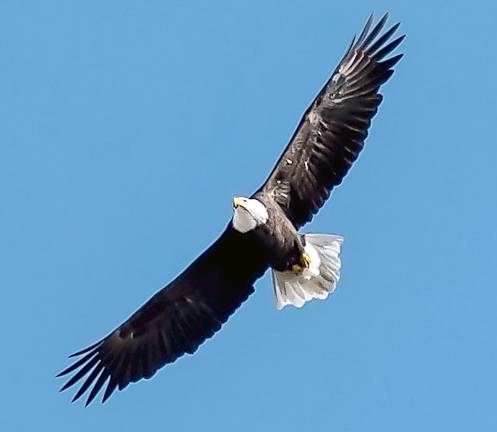Heavy metal lead poses widespread threat to eagles and other birds

In addition to pesticides, toxins like the heavy metal lead (Pb) continue to be a widespread threat, affecting birds from golden eagles and California condor to waterfowl.
For hundreds of years, lead was used as an additive in paint, gasoline, pipes, and other materials. Citing lead’s extreme health risks to humans, especially children, in 1977, the U.S. Consumer Product Safety Commission banned lead paint in residential and public buildings as well as in toys and furniture. In 1996, it was banned from use in gasoline.
Unfortunately, the use of lead in bullets and shotgun pellets continues to provide a pathway for lead poisoning in humans and wildlife, including eagles, hawks, and vultures.
Millions of birds are poisoned by lead every year. Some birds, like bald eagles, accidentally ingest lead shotgun pellets and ammunition fragments when scavenging on carcasses or remains left by hunters.
Other birds mistake spent shot for seed in fields and forests, while diving birds like common loons swallow lead fishing tackle while foraging on lake bottoms.
Lead bullet fragments or residues in game meat also pose a significant risk to hunters and their families (huntingwithnonlead.org).
Perhaps the most iconic example of the impact lead toxicity can have on a species’ population is that of the California condor.
As of October 2014, more than 400 California condors remained, but numbers had dipped as low as 22 in 1987 due in part to lead poisoning caused by eating animal carcasses containing lead shot.
A 2012 press release reported that two-thirds of California condor deaths were caused by lead poisoning. To this day, between 45 and 95 percent of the condor population tests positive for lead exposure. In response, California passed a law that phased out the use of lead ammunition for any hunting purpose by July 1, 2019.
In spite of the problems, there are hopeful signs. The United States military has been converting to non-lead versions of some bullets, removing thousands of tons of lead from the environment.
We encourage the hunting and fishing communities to follow the military’s lead and to switch to non-lead alternatives as well.
Non-lead options, such as copper, tin, and tungsten, are readily available; the more these products are used, the more affordable and widely accepted they will become.
American Bird Conservancy
abcbirds.org